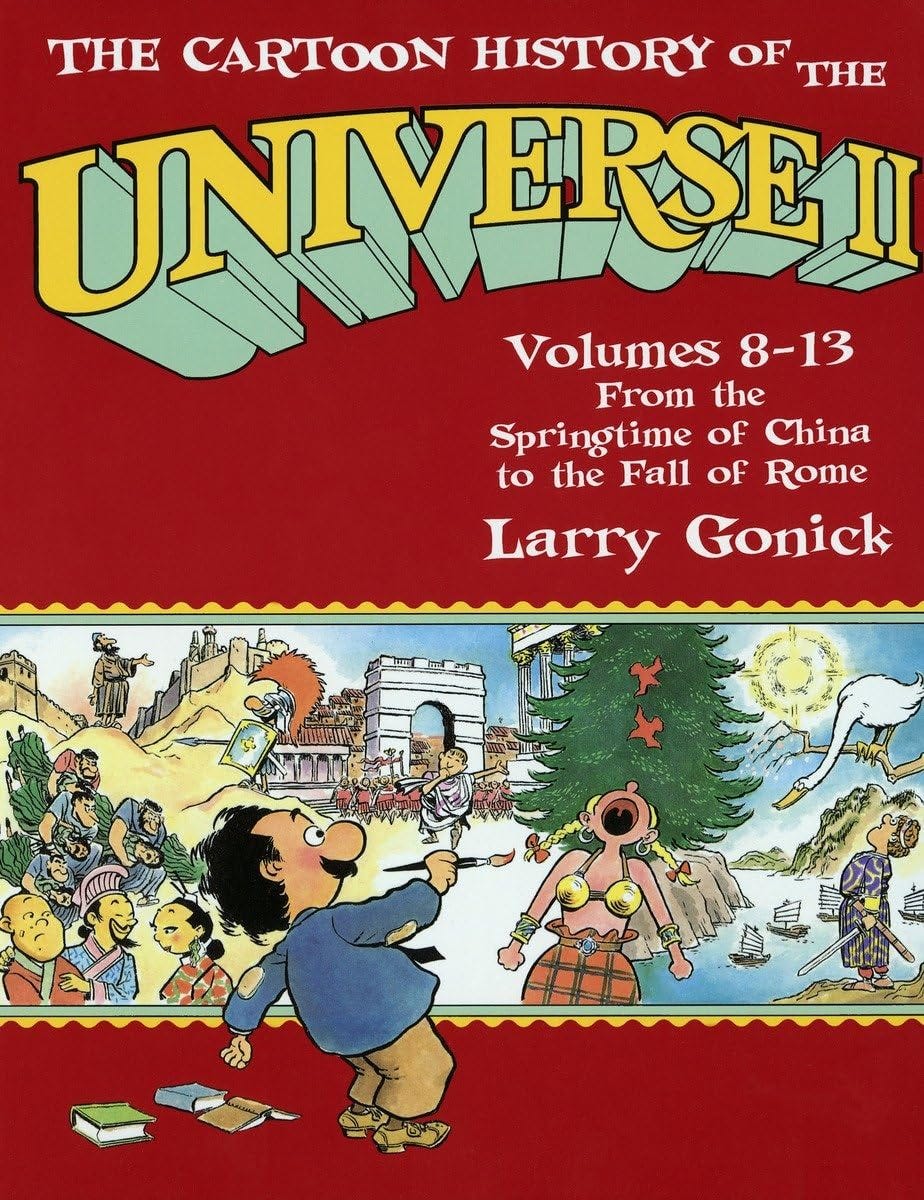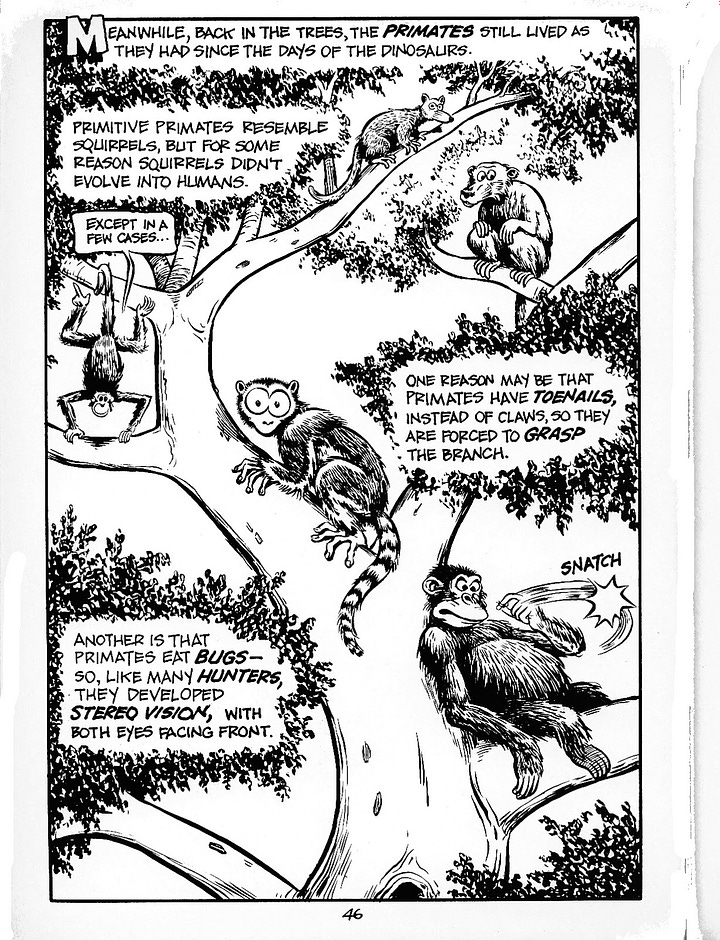The Omnivore’s Dilemma
Seeking the origin of our food
This is a behavior-changing book. It explores the origin of modern North American food and challenges you, the reader, to confront the genesis of what you eat. It does not begin as you think it does. Author Pollan, now an enlightened omnivore, challenges everyone to take responsibility for their food — no matter what it is — by tracking its path back to the sun. If you can face the path of your food in full knowledge and be at ease with it, then happy eating! If not, then Pollan traces out interesting alternative food paths, pioneered by memorable characters full of great stories. For instance he feels obligated as a meat-eater to not only to witness the slaughter of his meat, but even to kill it himself if he can. He leads us steadily all the way down this road without ever scaring us off. As one experiment, he prepares a meal with food that he either hunted or grew himself, and again tracks its moral and energetic path to the table. Almost everyone I know who has read this book, including our family, has altered their eating habits in interesting and unexpected ways.*
Whole Foods offers what Marx terms “a landscape of reconciliation” between the realms of nature and culture, a place where, as the marketing consultant put it, “people will come together through organic foods to get back to the origin of things” — perhaps by sitting down to enjoy one of the microwaveable organic TV dinners (four words I never expected to see conjoined) stacked in the frozen food case. How’s that for having it both ways?
*
Conventional nutritional wisdom holds that salmon is automatically better for us than beef, but that judgement assumes the beef has been grain-fed and the salmon crill-fed; if the steer is fattened on grass and the salmon on grain, we might actually be better off eating the beef. (Grass-finished beef has a two-to-one ratio of omega-6 to -3 compared to more than ten to one in corn-fed beef.) The species of animal you eat may matter less than what the animal you’re eating has itself eaten.
01/5/07Excerpt
Descendants of the Maya living in Mexico still sometimes refer to themselves as "the corn people." The phrase is not intended as a metaphor. Rather, it's meant to acknowledge their abiding dependence on this miraculous grass, the staple of their diet for almost nine thousand years. Forty percent of the calories a Mexican eats in a day comes directly from corn, most of it in the form of tortillas. So when a Mexican says "I am maize" or "corn walking," it is simply a statement of fact: The very substance of the Mexican's body is to a considerable extent a manifestation of this plant.
Researchers who have compared the isotopes in the flesh or hair of North Americans to those in the same tissues of Mexicans report that it is now we in the North who are the true people of corn. "When you look at the isotope ratios," Todd Dawson, a Berkeley biologist who's done this sort of research, told me, "we North Americans look like corn chips with legs." Compared to us, Mexicans today consume a far more varied carbon diet: the animals they eat still eat grass (until recently, Mexicans regarded feeding corn to livestock as a sacrilege); much of their protein comes from legumes; and they still sweeten their beverages with cane sugar.
So that's us: processed corn, walking.
*
One way to look at the breeding work going on at ranches like the Blairs' is that the contemporary beef cow is being selected for the ability to eat large quantities of corn and efficiently convert it to protein without getting too sick. The species is evolving, in other words, to help absorb the excess biomass coming off America's cornfields. But the cow's not there quite yet, and a great many feedlot cattle -- virtually all of them to one degree or another, according to several animal scientists I talked to -- are simply sick.
Cattle rarely live on feedlot diets for more than 150 days, which might be about as much as their systems can tolerate....
What keeps a feedlot animal healthy -- or healthy enough -- are antibiotics. Rumensin buffers acidity in the rumen, helping to prevent bloat and acidosis, and Tylosin, a form of erythromycin, lowers the incidence of liver infection. Most of the antibiotics sold in America today end up in animal feed, a practice that, it is now generally acknowledged (except in agriculture), is leading directly to the evolution of new antibiotic-resistant superbugs.
*
Though it was only the third week of June, the pasture beneath me had already seen several rotational turns. Before being cut earlier in the week for the hay that would feed the farm's animals though the winter, it had been grazed twice by beef cattle, which after each day-long stay had been succeeded by several hundred laying hens. They'd arrived by Eggmobile, a ramshackle portable henhouse designed and built by Salatin. Why chickens? "Because that's how it works in nature," Salatin explained. "Birds follow and clean up after herbivores." And so during their turn in the pasture, the hens had performed several ecological services for the cattle as well as the grass: They'd picked the tasty grubs and fly larvae out of the cowpats, in the process spreading the manure and eliminating parasites. (This is what Joel has in mind when he says the animals do the work around here; the hens are his "sanitation crew," the reason his cattle have no need of chemical parasiticides.) And while they were at it, nibbling on the short cattle-clipped grasses they like best, the chickens applied a few thousand pounds of nitrogen to the pasture -- and produced several thousand uncommonly rich and tasty eggs. After a few week's rest, the pasture will be grazed again, each steer turning these lush grasses into beef at the rate of two or three pounds per day.
The Omnivore's Dilemma Michael Pollan 2006, 451 pages $18










